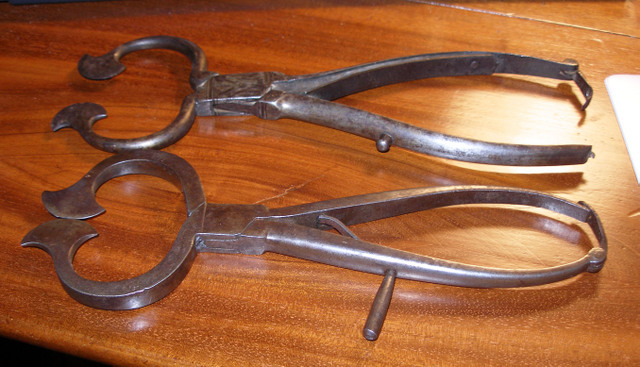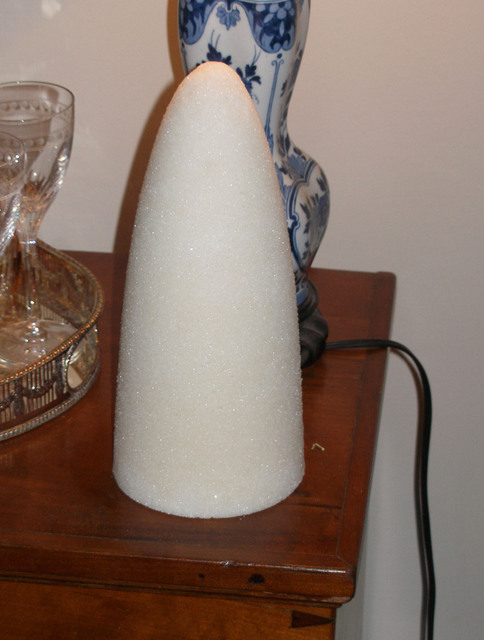|
|
In this Forum we discuss the silver of the United Kingdom, as well as British Colonial silver and Old Sheffield Plate. Past British - Irish Sterling topics/threads worth a look. |
|
|
| How to Post Photos | Want to be a Moderator? |
|
|
In this Forum we discuss the silver of the United Kingdom, as well as British Colonial silver and Old Sheffield Plate. Past British - Irish Sterling topics/threads worth a look. |
|
|
| How to Post Photos | Want to be a Moderator? |

|
 SMP Silver Salon Forums SMP Silver Salon Forums
  British / Irish Sterling British / Irish Sterling
  Were sugar sifters around in the 18th century? Were sugar sifters around in the 18th century?
|
| next newest topic | next oldest topic |
| Author | Topic: Were sugar sifters around in the 18th century? |
|
Primroy Posts: 42 |
  
[26-1398] I found one related conversation on an mystery sugar sifter. IP: Logged |
|
tmockait Posts: 963 |
  
I have been hoping some one more knowledgable would jump in on this one. I have a small collection of Victorian and early 20th century English sugar sifters. I found one article refering to them as a Victorian item for sifting powdered or granulated sugar on fruit and pastries. I don't recall ever seeing one earlier than the Victorian period, but that harldy constitutes evidence. It seems sugar was a fairly expensive item until mass production in the 19th century, so if I were betting, the Victorian period seems the right time to invent this implement. Tom IP: Logged |
|
Dale Posts: 2132 |
  
Old sugar was not granulated. It came in bricks which were then hacked into smaller chunks. These went into the sugar bowl. My understanding of the sifter is that it was where a small chunk of sugar was placed. Then by rattling around in the sifter, smaller pieces were knocked off and fell through the holes in floor. Try using a sifter with a hard piece of sugar and see how it functions. IP: Logged |
|
tmockait Posts: 963 |
  
It depends what you mean by "old." 18th century sugar came in the form you describe, though as cones rather than blocks. The sugar cube was "invented" in 1841. I am not sure when granulated sugar came in. Raw cane sugar exists as crystals anyway. All of which still leaves us with the unanswered question of when sifters became popular. Tom IP: Logged |
|
ajlewisbrookes Posts: 5 |
  
I've done a lot of research on Sugar Sifters. The early date is Aprox 1770, so yours fits in as a very early one. The date does work. Andy IP: Logged |
|
tmockait Posts: 963 |
  
Thanks Andy. Can you post some more information on your research? Why they came into use then, etc. Tom IP: Logged |
|
dragonflywink Posts: 993 |
  
I'm having a hard time envisioning the chunks of sugar being rattled around in the that small bowl, hoping to get a little powder. Wouldn't it make more sense to nip off a bit and grind it with a mortar and pestle? Believe sugar cones are still available, I've seen them in German import stores, used for some sort of flaming punch concoction. ~Cheryl IP: Logged |
|
FWG Posts: 845 |
  
Cone sugar is definitely still available; brown "piloncillo" can be found in any Latin market, although the white is harder to find. My understanding is that it wasn't rattled around in the sifter to break up, but rather some would be broken up in a bowl, and the sifter would then be used to keep the larger chunks from going into or onto whatever was being sweetened. The remaining chunks in the sifter could then be returned to the bowl to be broken up some more. For sifting true powdered sugar onto baked goods, I find a fine mesh basket like a tea-strainer to be better than the traditional sifters, which tend to have larger holes. IP: Logged |
|
Primroy Posts: 42 |
  
Thanks everyone for taking the time to look at this sifter. The seller assured me this was free of damage. Upon closer inspection, there is a fine horizontal age crack running along the upper length of the piercing. It is visible on the inside only and does not go through to the outside of the bowl. I wonder if this constitutes damage or of it is a stress crack associated with age? Unfortunately, I only have a scanner and was not able to scan this for your review. [This message has been edited by Primroy (edited 05-13-2007).] IP: Logged |
|
argentum1 Posts: 602 |
  
I keep saying that a little bit of damage really does not bother me. Then I keep rambling on by saying "if we were that old we would be in far worse condition". Do you like the item and/or is the damage/age stress crack really a cause for concern. It looks to be a very nice piece of early silver so just sit back and enjoy the daylights out of it. IP: Logged |
|
Ulysses Dietz Moderator Posts: 1265 |
  
Just keep in mind everyone that anyone in the 18th century owning silver and sugar at the same time would have had servants to do whatever one wanted with the sugar. So if you have a sifter, someone grinds it up in the kitchen so you can sprinkle it on your berries. Remember there were sugar casters (i.e. shakers) in the 18th century as well, and are far more common in the US (if common and extremely rare can be seen as the same thing!) IP: Logged |
|
Kimo Posts: 1652 |
  
You are all likely correct, but to my eye the large size of it suggests it might more likely be a serving spoon of some kind where you wanted to let juice or something small fall through. As for damage, I agree that it should not affect the collectability but in my opinion it does affect the market price. Whether this should or should not be the case, the reality is that most collectors are willing to pay more for an object in undamaged condition than a similar one with damage. Moderate wear in relation to its age and use are not factors in my experience, but this is different from damage such as cracks, breaks, replaced parts, repairs, or excessive wear to the point of it affecting soundness. IP: Logged |
|
Primroy Posts: 42 |
  
Here is a picture of the very fine crack. IP: Logged |
|
ahwt Posts: 2377 |
  
  I believe in the late 1700's and early 1800's sugar nips were more likely used in the frontier of the United States than sugar sifters. Above are some typical sugar nips that are unmarked as to origin. The sugar nips were apparently used to chip off a small portion of the sugar cone either by striking with the hammer like portion or by chipping off a portion with the pincers. All the sugar nips that I have seen were made from iron – I have not seen any made from silver. The sugar cone is American as my wife made it. In the 1960s Williamsburg sold sugar cones of this size (9 inches tall), but somewhere along the way they started making smaller ones and I am not sure that they even make any today. My wife found a mold of about the same size and shape as one we brought in the 60s from Williamsburg and made sugar cones for a few years. We usually have one on a sugar chest; however I am not sure that this design was ever used with sugar chests. Sugar chests seem to be a unique American design created because of the high price and limited availability of sugar in the early 1800s. Sugar chests IP: Logged |
All times are ET | next newest topic | next oldest topic |
  |
|
Ultimate Bulletin Board 5.46a
|
1. Public Silver Forums (open Free membership) - anyone with a valid e-mail address may register. Once you have received your Silver Salon Forum password, and then if you abide by the Silver Salon Forum Guidelines, you may start a thread or post a reply in the New Members' Forum. New Members who show a continued willingness to participate, to completely read and abide by the Guidelines will be allowed to post to the Member Public Forums. 2. Private Silver Salon Forums (invitational or $ donation membership) - The Private Silver Salon Forums require registration and special authorization to view, search, start a thread or to post a reply. Special authorization can be obtained in one of several ways: by Invitation; Annual $ Donation; or via Special Limited Membership. For more details click here (under development). 3. Administrative/Special Private Forums (special membership required) - These forums are reserved for special subjects or administrative discussion. These forums are not open to the public and require special authorization to view or post. |
|
copyright © 1993 - 2022
SM Publications
All Rights Reserved. Legal & Privacy Notices |